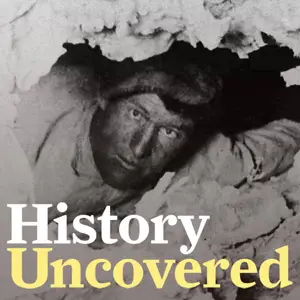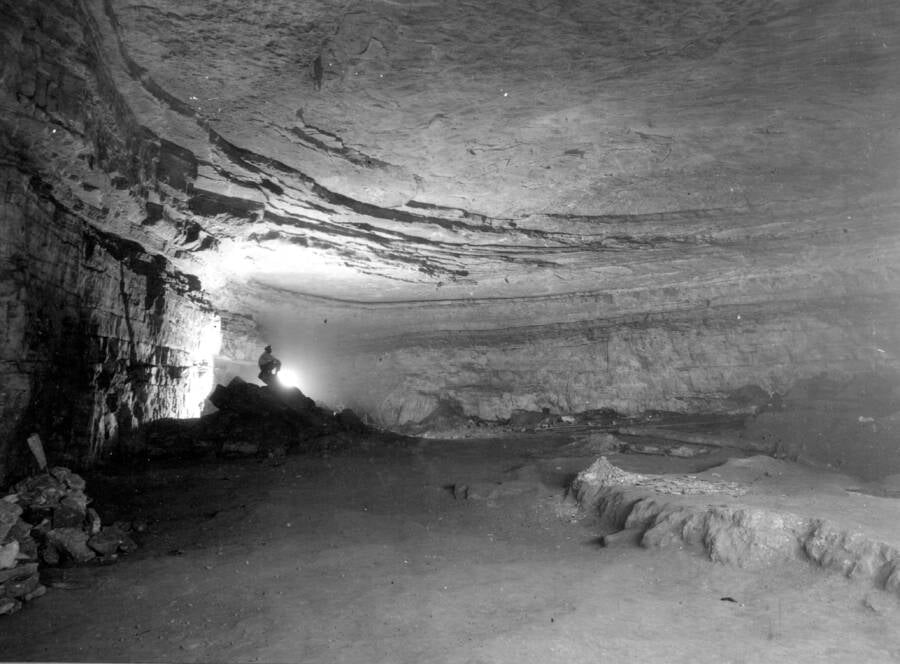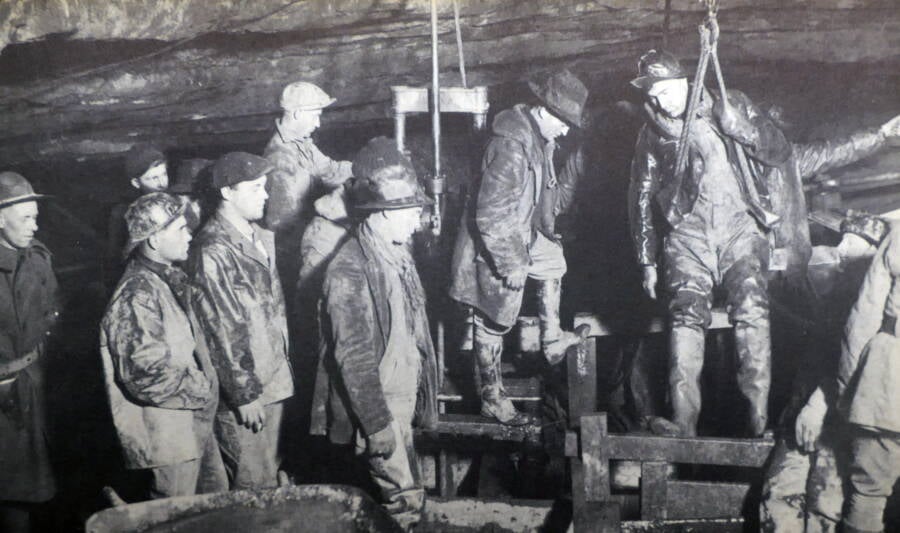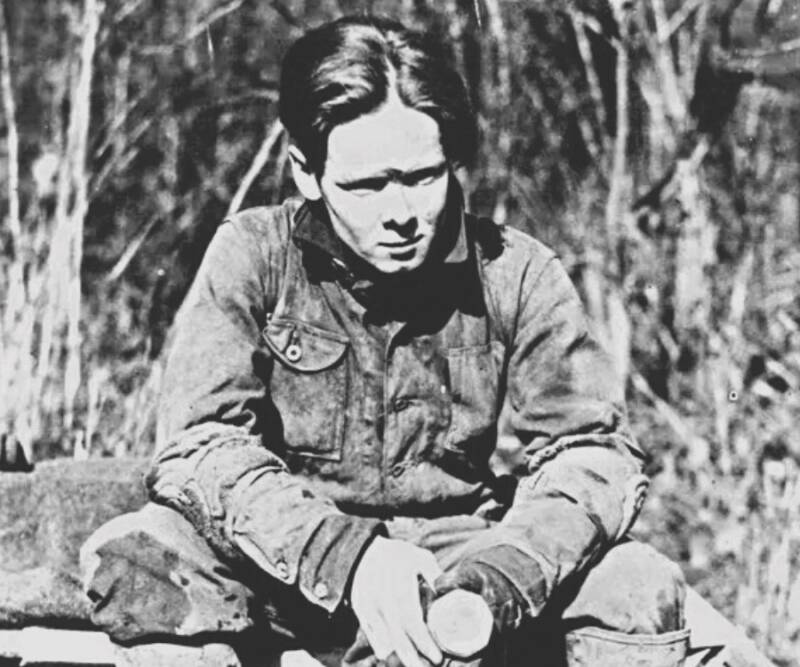On January 30, 1925, William Floyd Collins got stuck in a passageway deep inside Kentucky's Sand Cave, inciting a media spectacle that drew tens of thousands of people to the scene in hopes of seeing him rescued.

Public DomainWilliam Floyd Collins was an avid cave explorer since childhood.
Floyd Collins was an experienced cave explorer. A participant in what became known as Kentucky’s “Cave Wars” of the early 20th century, Collins made several notable discoveries, including the Great Crystal Cave. But that’s not why the story of Floyd Collins — or Floyd Collins’ body — is remembered today.
A cave explorer since the age of six, Collins had never lost his lust for adventure — or for profit — and thus eagerly explored a new cave called the Sand Cave in 1925. But instead of turning the cave into a money-making operation as he’d hoped, Collins got trapped there.
Once his rescuers arrived, Collins’ entrapment became a media sensation. People gathered at the mouth of the cave, the entire nation waited in suspense to see if he would be saved, and heartwrenching interviews with Collins conducted by William Burke Miller later earned the reporter a Pulitzer.
In the end, however, Collins perished. But the story of what happened to Floyd Collins’ body is almost as astonishing as that of his demise inside Sand Cave.

Floyd Collins And The Kentucky Cave Wars
William Floyd Collins was born on June 20, 1887, in Logan County, Kentucky. His parents, Lee and Martha Jane Collins, owned a plot of farmland not far from Mammoth Cave, the world’s longest-known cave system comprising over 420 miles of surveyed passageways. Naturally, Mammoth Cave was, and still is, a popular destination for curious folk looking to explore its depths.
That same curiosity took hold of a young Floyd Collins, who, according to the National Park Service, made a hobby out of exploring caves near his parents’ farmland. Collins’ passion for caves led him to discover what came to be known as the Crystal Cave beneath the family farm in 1917.
Collins worked to develop the cave into an attraction that could draw people en route to Mammoth Cave by boasting of its unique formation of helictite and gypsum cave systems. But by the 1920s, other locals started trying to turn a profit from the state’s vast cave systems. Soon, rival businesses across the land touted their own guided cave tours.

Public DomainThe Mammoth Cave rotunda, just one part of the vast 420-mile cave system that spawned the “Cave Wars.”
The so-called “Cave Wars” erupted as enterprising entrepreneurs scoured Kentucky for new caves. The competition was fierce and the work was dangerous — and Floyd Collins was determined to come out on top. Disappointed by Crystal Cave’s lack of financial success, Collins set his sights on a different cave nearby.
This cave, located on the property of a nearby farmer named Beesly Doyel, seemed promising. Best of all, Doyel’s property was closer to Cave City Road than Crystal Cave, which meant that anyone on their way to Mammoth Cave would most certainly pass it by.
Collins and Doyel struck an agreement to expand the cave, dubbed Sand Cave, and split the inevitable profits. Sand Cave did, of course, become a nationally known location. But it came at the expense of Floyd Collins’ life.
The Haunting Story Of Collins’ Death Inside Sand Cave

Bettmann/Getty ImagesFloyd Collins’ brother, Homer, awaiting news of his brother’s rescue.
On January 30, 1925, Floyd Collins entered Sand Cave for the first time with nothing more than a kerosene lamp to light his way. The cave was full of tight and dangerous passageways. But according to the Kentucky National Guard, it also contained a magnificent subterranean coliseum, roughly 80 feet high and only 300 feet from the cave’s entrance.
Collins had found cave gold. Shortly thereafter, however, his lamp began to flicker, so Collins quickly made for the exit. In his haste, he dropped his lamp as he wedged his way through the tight passageway. And when he tried to grab it, he dislodged a 27-pound rock that pinned his leg and trapped him.
It wasn’t until a day later that Beesly Doyel’s son Jewell discovered Collins still trapped in the cave. News of his predicament quickly spread throughout Cave City and before long countless people had arrived at the cave. Some came to help. Others were looky-loos hoping to watch the rescue.

Universal History Archive/Universal Images Group via Getty ImagesA team of miners at Sand Cave as part of the rescue mission to save Floyd Collins.
Eventually, word of Collins’ entrapment spread far beyond Kentucky’s borders. Help arrived to try and reach Collins in the form of engineers, geologists, and fellow cavers; miners even attempted to dig a new shaft to get to the trapped explorer. All of their efforts failed.
They could reach Floyd Collins, but they had no way of getting him out.
Each day, more and more people came to witness the event which was now bordering on spectacle. The mouth of the cave was crowded with tens of thousands of would-be rescuers, curious onlookers, and vendors looking to make a quick buck selling food, drinks, and souvenirs. The Kentucky National Guard notes that as many as 50,000 people may have gathered nearby.
With this crowd came a young Louisville Courier-Journal reporter named William “Skeets” Burke Miller. He was so called because he was “not much bigger than a mosquito.” And soon his small frame proved beneficial.
Able to squeeze through the narrow tunnels of Sand Cave, Miller was able to conduct several heartwrenching — and later Pulitzer Prize-winning — interviews with Collins, who was hopelessly trapped.

Public DomainAfter winning his Pulitzer Prize, Skeets Miller left the newspaper business and worked for his family’s ice cream parlor in Florida. Later, he worked as a radio reporter for NBC.
“My flashlight revealed a face on which is written suffering of many long hours, because Collins has been in agony every conscious moment since he was trapped at 10 o`clock Friday morning,” Miller wrote. “I saw the purple of his lips, the pallor on his face, and realized that something must be done before long if this man is to live.”
Sadly, nothing could be done. On Feb. 4, part of the cave ceiling collapsed and largely cut off Collins from his rescuers. And on Feb. 16, rescuers traversing a newly made shaft found Floyd Collins’ body.
“No sounds came from Collins at all, no respiration, no movement, and the eyes were sunken, indicating, according to physicians, extreme exhaustion going with starvation,” they reported per the Kentucky National Guard.
Floyd Collins died trying to turn his cave into a success. Ironically, his death would make the nearby Crystal Cave a tourist attraction.
The Strange Story Of Floyd Collins’ Tomb

Bettmann/Getty ImagesIn total, Floyd Collins’ body was moved and reburied four times.
It took another two months for Floyd Collins’ body to be removed from Sand Cave. Once he was extracted, he was laid to rest on his family’s farm. Normally, that’s where the story would end. But in this instance, it only gets weirder.
In 1927, Dr. Harry Thomas purchased Crystal Cave and exhumed Floyd Collins’ corpse. He put Collins’ body in a glass-topped coffin in the center of the cave in order to draw in tourists who could look upon his remains. Next to it was a tombstone that read: “Greatest Cave Explorer Ever Known.”

Kentucky Digital LibraryA postcard of “Grand Canyon Avenue” featuring Floyd Collins’s tomb in the center.
Then things took an even stranger twist. On Sept. 23, 1927, a visitor to Crystal Cave tried — and failed — to steal Collins’ body. Less than two years later, on March 18, 1929, a thief did steal Floyd Collins’ corpse. Authorities were able to track him down with the help of bloodhounds, but Collins’ corpse somehow lost a leg in the process.
The strange story of Floyd Collins’ body finally came to an end in 1961, when the National Park Service purchased Crystal Cave. Access to Floyd Collins’ tomb was limited, and his body was finally given a “proper” burial in 1989 at the Mammoth Cave Baptist Church.
Thankfully, in the years since, no one else has tried to steal Floyd Collins’ body. The doomed explorer can finally, truly, rest in peace.
After reading about Floyd Collins, learn about another famous explorer, Beck Weathers, who survived being left for dead on Mount Everest. Or, check out the incredible story of Juliane Koepcke, the teen who fell 10,000 feet out of a plane — and lived.





